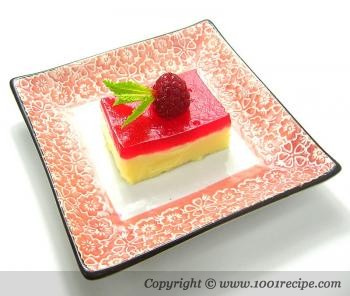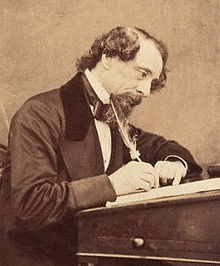دنیای زبان انگلیسی ( بهروزپور )
لغات و اصطلاح .داستان کوتاه . شعر.جوک .ضرب المثل.اشپزی.رمان. نمایشنامه.متن دوزبانهدنیای زبان انگلیسی ( بهروزپور )
لغات و اصطلاح .داستان کوتاه . شعر.جوک .ضرب المثل.اشپزی.رمان. نمایشنامه.متن دوزبانهVanilla Cream and Strawberry Jello
Main Ingredients:
Sheida: Colorful and delicious, this will be your favorite dessert.
Strawberry jello: 1 packet
Egg yolk: 5
Milk: 2.5 cups
Sugar: 1 cup
Gelatin Powder: 5 tsp (15 ML) Or 2 packs of Knox Gelatin Powder, each contains about 7 ml.
Vanilla: 1/8 tbsp
Whipping Cream: 1/2 Cup
Fresh Strawberries or Raspberries
Mint leaves
نامه ای به خدا : The letter to God

One day, a letter came addressed in a shaky handwriting to God with no actual address.
He thought he should open it to see what it was about. The letter read
مردی برای یک اداره پست کار می کرد که مسئول رسیدگی به نامه هایی که آدرس نا معلوم داشتند بود.
یک روز متوجه نامه ای شد که روی پاکت آن با خطی لرزان نوشته شده بود نامهای به خدا !
با خودش فکر کرد بهتر است نامه را باز کرده و بخواند.در نامه این طور نوشته شده بود:
I am an 83 year old widow, living on a very small pension. Yesterday someone stole my purse.
It had $100 in it, which was all the money i had until my next pension check.
Next Sunday is Christmas, and I had invited two of my friends over for dinner.
Without that money, I have nothing to buy food with.
I have no family to turn to, and you are my only hope. Can you please help me
AndisheHaye Zendegi
شهرهای دیدنی ایران : Geography and Nature
Geography and Nature
of Iran
Covering an area of 1,648,000 square kilometers, the Islamic Republic of Iran is located in southwestern Asia. The Caspian Sea, Turkmenistan, Azerbaijan and Armenia in the north; Afqanistan and Pakistan in the east; Turkey and Iraq in the west surround the country. On the south Iran borders the Persian Gulf and the Sea of Oman. Total terrestrial borders of the country are 5,170 km. and total water borders are 2,510 km.
Caspian Sea, Gilan
Iran is situated at the heart of the Middle East and, as a bridge, links the Caspian Sea, the largest land-locked body of water in the world, to the Persian Gulf. It is also a crossroad between the East and the West. Thus, historically, Iran has been in the juncture of cultural, intellectual and political manifestations of both the East and the West, while preserving it"s unique identity.
Unique landscapes such as limpid water springs, pomegranate orchards, pistachio gardens, rows of lombardy poplars, decampment of nomads in different seasons, stelliferous nights, rocky mountains, endless high and low lands, extinct snow-clad volcanoes, dense forests of the Alborz Mountain Range, and coastlines of the Caspian Sea, the Persian Gulf and the Sea of Oman are all eye-catching and memorable.
Abumoosa Island
Iran"s landscapes vary remarkably at different seasons. They are at times full of stone and sand, at times full of floodwater, sometimes covered by snow or by lush vegetation. Iranian artists have portrayed Iran"s nature as a sign of diversity and charm in their different and diverse artistic works. Iranians also have traditionally valued Water as a symbol of life and development. Innumerable permanent streams can be seen flowing in meadows, gardens, orchards, homes, mosques and sacred places irrigating trees.Nature and it"s diversity in Iran are valuable parameters for development of the tourism industry. In total, it is estimated that 19 million hectares of terrestrial land are covered by orchards, gardens and farmlands; 10 million hectares are plain and pastures; 19 million hectares are forests; and the remaining include barren lands, desert, and mountains.
ادامه مطلب ...smiling

Smiling is
infectious,
you catch it like the flu.
when someone smiled at me today,
I started smiling too.
I passed around the corner,
and someone saw my grin.
when he smiled I realized.
I'd passed it on to him!
I thought about that smile,
then I realized it's worth.
a single smile just like mine,
could travel round the Earth
what-am-i- چیستان
RIDDLE ME THIS
Violet, indigo, blue and green, yellow, orange and red; these are the colors you have seen after the storm has fled.
I am now black but once was red.
Charles Dickens
Charles John Huffam Dickens (pronounced /ˈtʃɑrlz ˈdɪkɪnz/; 7 February 1812 – 9 June 1870) was the most popular English novelist of the Victorian era, and he remains popular, responsible for some of English literature's most iconic characters.[1]
Many of his novels, with their recurrent concern for social reform, first appeared in magazines in serialised form, a popular format at the time. Unlike other authors who completed entire novels before serialisation, Dickens often created the episodes as they were being serialized. The practice lent his stories a particular rhythm, punctuated by cliffhangers to keep the public looking forward to the next instalment.[2] The continuing popularity of his novels and short stories is such that they have never gone out of print.[3]
His work has been praised for its mastery of prose and unique personalities by writers such as George Gissing, Leo Tolstoy and G. K. Chesterton; though others, such as Henry James and Virginia Woolf, criticised it for sentimentality and implausibility.
Literary style
Dickens loved the style of 18th century Gothic romance,[citation needed] although it had already become a target for parody.[citation needed] One "character" vividly drawn throughout his novels is London itself. From the coaching inns on the outskirts of the city to the lower reaches of the Thames, all aspects of the capital are described over the course of his body of work.
His writing style is florid and poetic, with a strong comic touch. His satires of British aristocratic snobbery—he calls one character the "Noble Refrigerator"—are often popular. Comparing orphans to stocks and shares, people to tug boats, or dinner-party guests to furniture are just some of Dickens's acclaimed flights of fancy. Many of his characters' names provide the reader with a hint as to the roles played in advancing the storyline, such as Mr. Murdstone in the novel David Copperfield, which is clearly a combination of "murder" and stony coldness. His literary style is also a mixture of fantasy and realism.
Characters

Dickens is famed for his depiction of the hardships of the working class, his intricate plots, and his sense of humour. But he is perhaps most famed for the characters he created. His novels were heralded early in his career for their ability to capture the everyday man and thus create characters to whom readers could relate. Beginning with The Pickwick Papers in 1836, Dickens wrote numerous novels, each uniquely filled with believable personalities and vivid physical descriptions. Dickens's friend and biographer, John Forster, said that Dickens made "characters real existences, not by describing them but by letting them describe themselves."[45]
Dickensian characters—especially their typically whimsical names—are among the most memorable in English literature. The likes of Ebenezer Scrooge, Tiny Tim, Jacob Marley, Bob Cratchit, Oliver Twist, The Artful Dodger, Fagin, Bill Sikes, Pip, Miss Havisham, Charles Darnay, David Copperfield, Mr. Micawber, Abel Magwitch, Daniel Quilp, Samuel Pickwick, Wackford Squeers, Uriah Heep and many others are so well known and can be believed to be living a life outside the novels that their stories have been continued by other authors.[citation needed]


